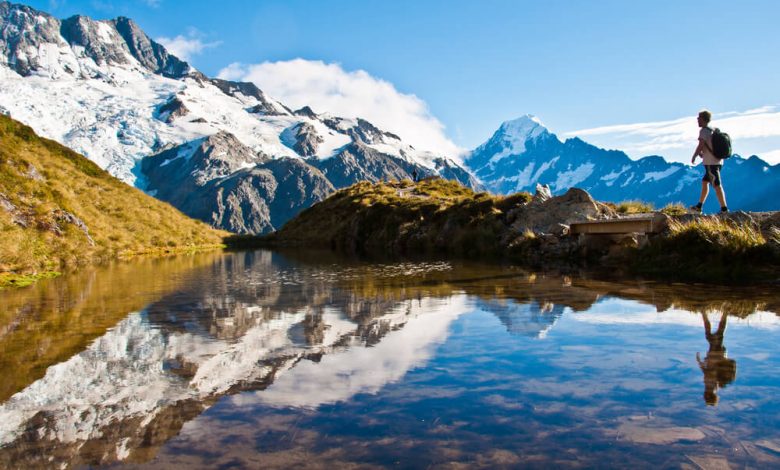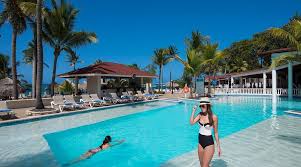Best Time to Visit New Zealand: A Seasonal Guide for Every Traveler

New Zealand. Also known as Aotearoa in the Māori language, it is nothing short of a gateway to paradise. There are so many things that this iconic country in Oceania has to offer. As a result, New Zealand draws a crowd of millions of people in a year, and rightfully so. From the historical places to the natural wonders of the North Island to the serene landscapes of the South Island, New Zealand is the definition of serenity, culture, and modernity.
Having said this, New Zealanders face different weather conditions every day. Being situated in the southern part of the world, these weathers are somewhat different than what most people expect. Naturally, Flamingo Travels offers several iconic tour packages to New Zealand in different seasons to witness the beauty of this iconic country. Having said that, here’s a breakdown of the best time to visit New Zealandfor your perfect trip.
Spring (September – November): Perfect for Outdoor Adventures
Springtime in New Zealand (from September to November) brings in a reign of fresh and blooming flowers, pleasant weather, and sunny spots to witness the beauty of this iconic country. During the Spring season, one can experience an average temperature of 15°C (59°F) throughout the day. The temperature can drop a few degrees during nighttime.
The season when nature and wildlife create a symphony of colours, there are a plethora of activities that you can do in New Zealand. Hiking to watch the Te Puia Geyser erupt in front of your eyes is a breathtaking sight to witness. Alongside these leisure hikes, Springtime also offers you the chance to feed stingrays at Dive Tatapouri, zipline through the canopy forests of Rotorua, and dine on some traditional Māori food.
Summer (December – February): Ideal for Beaches and Festivities
Unlike India, a New Zealand summer starts in December and ends in February. During summer months, the country faces pleasant weather of 23°C (74°F) with a warm sun and clouds giving you company. The temperature can drop during nighttime to send a little chill, which adds to the New Zealand weather.
During the months of summer, people often go to visit the famous beaches of New Zealand, like Maitai Bay, Ninety Mile Beach, Piha Beach, Cathedral Cove, and more. Alongside these beaches, the country enjoys some music festivals in the summer like Rhythm and Alps, Rhythm and Vines, WOMAD, and, Traditional Māori Kai festivals.
Although these warm months offer some of the best experiences in New Zealand tourism, some tips for travelling during this peak tourist season often come in handy.
- The New Zealand sun is harsh. Wear an SPF 30+ sunscreen when necessary.
- Seek shade whenever possible.
- Carry sunglasses with you.
Autumn (March-May): A Tranquil Escape with Stunning Scenery
Autumn is when the word “serene” comes to mind to describe the beauty of New Zealand. From the months of March till May, the leaves turn brown, the water becomes tranquil, and forest floors are filled with the crunching sounds of dried leaves.
Autumn is one of the best seasons to visit New Zealand if you are looking for tranquillity and peace. The season does not offer a warm sun nor a spine-chilling cold as Autumn comes with pleasant weather of 15°C (59°F) during the daytime. The crowds are less, and the scenery is more. From a plethora of iconic wine tours of Napier and Hastings to the scenic drives along the Lindis Pass, New Zealand becomes a personal playground for tourists to enjoy and revel in the beautiful foliage and Autumn vibes of the country.
Several photography enthusiasts may find themselves with a camera witnessing the beauty of the changing landscapes and the browned trees of New Zealand as the country becomes a photogenic destination. Considering the biodiversity that these two islands hold, New Zealand becomes a paradise for photography and nature lovers.
Winter (June – August): A Paradise for Skiers and Snow Enthusiasts
Winter in New Zealand comes with a barrage of snow and cold that people love to see and witness. Several parts of the country (especially the Mt. Cook region) get covered in snow and are open to several activities like skiing and snow resorts.
From the months of June to August, the winter season of New Zealand stays at a low of 5°C (41°F) during the daytime. These temperatures can well drop into below zero degrees during the nighttime. As such, wintering in New Zealand can be a breathtaking experience (quite literally, if you don’t take some precautions against the cold).
The Southern Alps (running along almost the entire length of South Island) offer a plethora of skiing activities and tours where tourists can participate and join in on the fun. The heli-skiing is a must-do experience on the Tasman Glacier at Mt. Cook (the tallest mountain in New Zealand) and is only accessible in the months of June, July, and August.
After your adventurous activities, you can always check out a plethora of cosy retreats and ski resorts that offer a warm cup of hot chocolate and blankets to watch the beautiful snow transcend the beauty of New Zealand. The iconic landmarks (like Christchurch’s Church of the Good Shepherd) in Winter is an experience that cannot be simply described in words.
Conclusion
All in all, New Zealand is a year-round destination where tourists can enjoy some iconic fleeting moments and memories that last a lifetime. From the leaf-crunching sounds of Autumn to the sounds of thrill and adventure during Winter, New Zealand has something to offer to everyone.
Flamingo Travels offers several iconic New Zealand Tour Packages that include an overall experience of the country in any season. The country calls to us all… are you ready to accept it?
Also check our Australia-New Zealand Tour Packages with Indian food!




